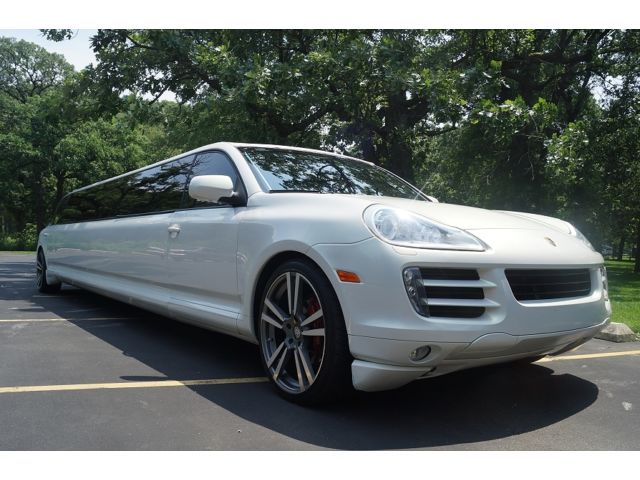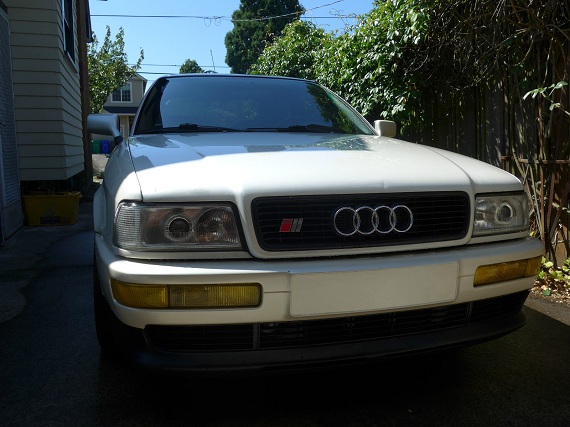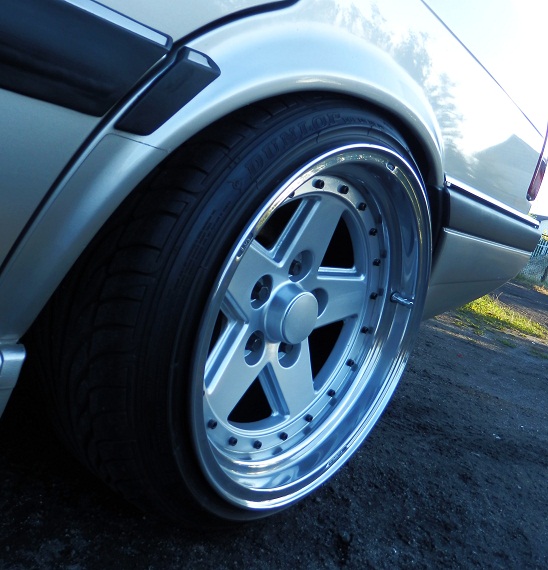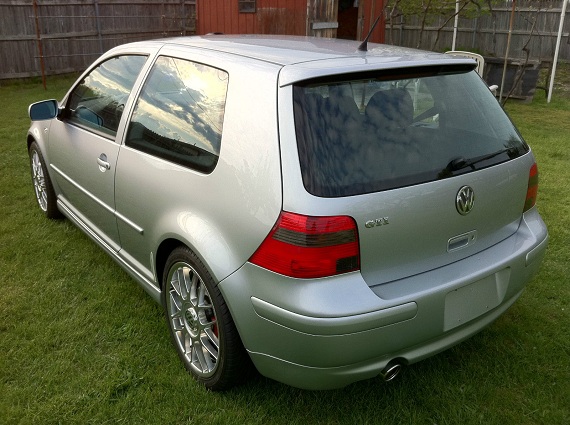So often with modified cars we decry the loss of a prime example of a highly desirable car in stock form. Of course, there are exceptions; original Ruf and AMG cars, Alpina and Hartge BMWs and even the occasional Treser is pretty neat. But generally outside of that the modifications don’t do much in terms of desirability to the market at large; people really seem to prefer stock examples. Despite that, when it comes to a generally unloved model, I’m willing to bet that no one will cry much for the loss – witness today’s 2008 Porsche Cayenne. While the facelift generation Cayenne is generally perceived as a visual improvement over the original design, I can’t say that there are a tremendous amount of enthusiasts that really get super excited about them. That’s especially true of the entry level 3.2 VR6 model; whether it’s true or not, it feels like it’s a lot more Volkswagen than Porsche, and I for one think the Touareg is better looking. Consequently, I let out an audible laugh and cheer when I stumbled across this 185″ stretched limousine version of a 2008 Cayenne:
Author: Carter
Who doesn’t love a good period wheel? They weren’t always the most attractive designs, but nowadays they’re all the rage; clean up a good set of wheels that were rare to begin with and now are hardly ever seen and you’ll be the envy of countless enthusiasts at your next show! I’ve got some cool period pieces today – from the Zenders that are always fan favorites to some obscure Porsche steel wheels. Even more obscure are the Hayashi racing and Simmons wheels for BMW; but clean and in the right application, they’d be pretty cool. I can’t ID the set of Japanese made red wheels, so input is appreciated. Otherwise, enjoy!
CLICK FOR DETAILS: Zender Sport 17×8,9 5×112 Wheels on eBay
Comments closedI have to admit that when I initially heard the details of the 337 Edition GTi, I was very excited. To me, it seemed like Volkswagen had finally gotten the message and brought us a modern interpretation of the car that I loved, the 1990-1992 GTi 2.0 16V. After a period of low performance 4-cylinder variants, the pokey 1.8T was now pumping out 180 horsepower and matching torque – finally, the car had the go to match the show. While the VR6 had continued into the fourth generation GTi, the accompanying weight, luxury items and electronic throttle meant that while horsepower numbers went up, the seat of the pants kick and thrill that was the hallmark of the original and 16V GTi – and even the Mk.3 VR6 – had been replaced by a stout highway cruiser. As if to answer critics and revisit the original formula, in 2001 Volkswagen introduced a stripped down, turned up version of the GTi called the 25th Anniversary edition, celebrating the original 1976 launch. For me, it was a return to form for the original hot hatch with some great updates. Unfortunately, it wasn’t heading to the U.S., because of course we didn’t receive the GTi until the 1983 model year. But U.S. fans were taken care of too when the nearly identical GTi 337 was launched. Outside, it got some awesome shot-peened BBS RC wheels that looked stunning compared the the rather bland wheels styles that had adorned the GTi since the BBS RMs on the 16V. Behind those wheels were beefed up brakes and red calipers, because red is of course faster (or, slower in that case?). It also sported a new body kit that highlighted the lower stance – hunkering the GTi down over those great wheels. After a period of hidden tailpipes, a polished exhaust tip emerged from the rear valance – a nice change for sure! Inside, special details like brushed trim, red-stitched shift boot and special “Golf Ball” knob for the 6-speed manual and some awesome Recaro seats greeted you. And to keep weight down, no sunroof was offered. This was a sporty car that went like it looked for a change! Limited to 1,500 examples, it was an instant hit and apparently a good bet for a future collectable:
CLICK FOR DETAILS: 2002 Volkswagen GTi 337 on eBay
2 CommentsAs iconic designs go, the E24 has to rank pretty high on most German car enthusiasts’ lists. The lines are pure and classic – a long hood line with chiseled front end, delicate and subtle wheel arches, a sweeping greenhouse and a flowing trunk line. It just looks right – the front of the E9 that it succeeded was equally as classic, but I have always felt that the back of the 6 series was prettier than the car it replaced. It took elements of some classic BMW designs that preceded it and incorporated them flawlessly with updates for a new time. By 1970s standards, it was a very clean design – consider what was coming out of Detroit during this time period, and you’ll understand why the 6 still looked reasonably fresh a decade on in the 1980s. But for my money, the prettiest of the 6s are the early Euro cars, unencumbered by the DOT bumpers. Early on, though, the 6s suffered from not much performance – the engine lineup was effectively carried over from the previous E9 platform. That was solved in 1978 with the launch of the 218 horsepower 635CSi; a 5-speed transmission, deeper airdam and black rubber rear spoiler with model designation indicated the higher performance of this model. The 635 officially wouldn’t come to U.S. shores until much later in 1984 with the E28 updates in place, but for a time this was the highest performance BMW coupe you could get. Finding early examples that are still in prime shape is quite tough these days, but there’s a lovely example on Ebay today in Connecticut:




